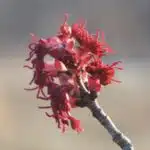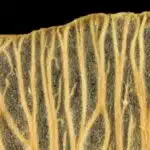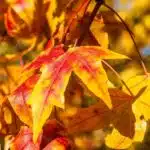The red maple tree is a symbol of strength and resilience in the face of adversity. Its deep red color represents its ability to not only survive but thrive in challenging conditions, and it stands as a testament to humankind’s ability to persevere. As a specialist in botany and gardening, I would like to share some insight into how to grow and care for these majestic trees.
For those looking to bring a bit of nature into their homes, the red maple tree is an excellent choice. Due to its hardy nature, it can easily be grown from seed, or even by transplanting existing saplings from other locations. In addition, with proper care, the red maple tree will produce beautiful foliage year-round, making it an attractive option for any garden or landscape.
Finally, if you’re looking for something that requires minimal maintenance yet provides maximum impact, then look no further than the impressive red maple tree. With just a few simple steps of care and attention, you can ensure that your trees remain healthy and vibrant for many years to come. Read on to learn more about how to grow and care for your very own red maple tree!
Choose The Right Location For Your Red Maple Tree
Irony is an interesting tool to use when you are introduced to a new task, especially one as important as planting a red maple tree. To the untrained eye, it may seem like an easy process with no real thought required – after all, it’s just a tree. Little do they know that selecting the right location for your red maple tree is not only integral for its growth but also vital for its long-term health.
As a specialist in botany and gardening, I can tell you that the environment around your red maple tree will play a huge part in its development. When scouting for the perfect spot, make sure that the area has full sun exposure and plenty of room for roots to spread out. Additionally, consider how much space you have available and how tall the tree can get when fully mature – if you don’t have enough room, then growing this particular species of tree might not be ideal.
When selecting your location, ensure that there are no obstacles or obstructions nearby that could interfere with the tree’s growth. This is particularly important if you live in an area with harsh weather conditions like strong winds or heavy downpours of rain – these elements could damage your newly planted red maple and affect its ability to grow properly.
By taking into account all these factors before planting your red maple tree, you can guarantee yourself a healthy and happy specimen for years to come! Now we move on to preparing the soil so that it’s ready for planting…
Prepare The Soil For Planting Your Red Maple Tree
Gardening is like sculpting a piece of art. You have to carefully prepare the canvas and tend to it with love and care in order to achieve the desired result. When it comes to planting a red maple tree, preparing the soil is an essential step that can’t be missed.
Soil preparation for growing a red maple tree involves several factors. It’s important to ensure that the soil has adequate drainage, as these trees prefer wet soils but cannot tolerate standing water or soggy conditions. The pH level of the soil should be between 4.5 and 6.0 for optimal growth; if not, it can be amended by adding garden lime or sulfur as needed. It’s also beneficial to incorporate organic matter such as compost or manure into the soil before planting your tree, which will help retain moisture and provide essential nutrients for growth.
Once the area has been prepared, you’re ready to plant your red maple tree! Make sure you dig a hole that’s twice as wide as your tree’s root ball, and make sure you don’t bury it too deep — its roots should sit just below ground level when planted correctly. To give your tree the best start possible, apply a layer of mulch around its base after planting and water it regularly until established. Following these steps will ensure your red maple thrives in its new home!
Plant Your Red Maple Tree
Ah, the joys of planting a red maple tree! Have you ever felt the thrill that comes with getting your hands in the soil and bringing a new life into existence? It’s an unparalleled sensation. But before you can experience that blissful moment, there are a few things you must do to ensure your little sapling has everything it needs to thrive.
Let us begin by prepping the soil for planting. We advise removing all weeds, rocks, and debris from the planting site, and then adding compost or other organic material to improve fertility. Once this is done, it’s time for the fun part: planting your red maple tree!
When doing so, make sure you dig a hole at least twice as wide as the root ball and just deep enough so that when placed in the hole, the top of the root ball is level with the surrounding soil. If need be, add additional compost or topsoil to fill in any gaps in order to ensure good drainage. Next, carefully remove any plastic or burlap wrapping from around the root ball and place it gently in the freshly dug hole. Finally, backfill with soil and lightly tamp down — making sure not to compress too tightly — and give your sapling a nice drink of water!
Now that your red maple tree is planted properly, it’s time to move on to providing regular care…
Water Your Red Maple Tree
Watering your red maple tree is an important part of caring for it. It’s essential to ensure your tree receives the right amount of moisture, and that it’s done at the right times. When planting a red maple, you should water it thoroughly and then continue regular watering for the next three months. Once established, water your red maple during dry periods or if there has been little rainfall.
To water your red maple, use a slow trickle from a garden hose or sprinkler at the base of the tree. This allows the moisture to penetrate deeply into the soil and reach the roots. You’ll want to apply enough water so that it penetrates 8-10 inches into the soil around the tree. When in doubt, err on the side of caution and give more rather than less water; too little may stunt growth or even kill your tree!
Lastly, be sure not to over-water your red maple as this can also lead to problems like root rot or leaf scorch. Water when needed but don’t forget about fertilizing too! With careful watering and fertilization practices, you can create healthy growing conditions for your red maple tree so it can thrive for years to come. Now let’s move onto fertilizing–a key step in caring for any type of tree.
Fertilize Your Red Maple Tree
Fertilizing your red maple tree is absolutely critical for its health, growth and success. It’s like giving a vitamin supplement to ensure it stays healthy and grows tall and strong. Without the right fertilizer, your red maple tree could be in trouble! As an expert botanist and gardener, I’m here to tell you how to nourish your red maple tree with the right fertilizer so it can continue thriving.
When it comes to fertilizing your red maple tree, there are several things to keep in mind. First off, you’ll want to use a slow-release fertilizer that has all three macronutrients: nitrogen, phosphorus and potassium. You should also take into account that different soil types need different fertilizers. For example, sandy soils may require more nitrogen than clay soils do. Additionally, always follow the instructions on the fertilizer label so you know exactly how much of each nutrient your tree needs for optimal health.
Finally, using mulch around the base of your red maple tree is a great way to improve its fertility levels as well as provide insulation from extreme temperatures. This will help protect the roots and keep them healthy throughout the year so they can absorb all the nutrients they need for growth and development. With these tips in mind, you can ensure that your red maple tree receives all of the essential nutrients it needs for optimal health and growth!
Prune Your Red Maple Tree
Pruning your red maple tree is an essential step for ensuring its health and growth. Not only does it allow you to shape the tree’s appearance, but it also encourages new growth and can help control pests and diseases. With proper pruning techniques, you can keep your red maple tree looking its best while promoting healthy growth.
When pruning a red maple tree, it’s important to use the correct techniques. Start by removing any dead or damaged branches from the tree and then thin out crowded areas of the canopy to improve air circulation and reduce the amount of shade on lower branches. You should also remove any crossing branches that may rub against each other as these can cause damage over time. To maintain the shape of the tree, use selective pruning to encourage upward growth and ensure a balanced look.
Finally, don’t forget that regular maintenance pruning is key for keeping your red maple tree strong and healthy. This involves removing deadwood annually as well as removing any shoots or suckers that may grow from around the base of the trunk. If done correctly, regular maintenance pruning will keep your red maple tree healthy while allowing you to enjoy its beauty for years to come. Transitioning into controlling pests and diseases on your red maple tree requires a proactive approach to prevent future problems before they start.
Control Pests And Diseases On Your Red Maple Tree
It is commonly believed that pruning of red maple trees is necessary to reduce the risk of pests and diseases. While it is true that proper pruning can help reduce the chances of pest or disease issues, there are also other steps which must be taken in order to ensure a healthy, long-living red maple tree. In this section, we will explore these steps and how best to control any pests and diseases which may affect a red maple tree.
As with any tree, regular inspection is key to preventing infestations or diseases from taking hold. When inspecting a red maple tree, look for signs such as discolored leaves, holes in the bark or chewed leaves. These could be signs of either pest infestations or fungal diseases. If found, it’s important to take action immediately and treat the affected areas appropriately – whether that’s applying an insecticide or fungicide depending on the issue at hand.
Another way to help prevent pests and diseases from affecting your red maple tree is through providing adequate nutrition for its growth and health. By providing enough nutrients for your tree – such as nitrogen, phosphorus and potassium – you can help boost its immune system against invaders. Additionally, mulching around the base of your tree can help keep moisture levels consistent while also suppressing weeds which could potentially bring in pests and disease-causing organisms.
By combining regular inspections with providing adequate nutrition and mulching around the base of your tree, you can significantly reduce the chances of pests and diseases affecting your beloved red maple tree – helping you ensure it has a long life ahead!
Protect Your Red Maple Tree In Winter
The winter season can be especially hard on red maple trees. To protect them from the cold and other winter weather, you need to be proactive. There are several steps you can take to ensure your red maple tree stays healthy and vibrant during the colder months. Firstly, mulching around the base of your tree helps to keep moisture in the soil, which is important for keeping the roots warm. You should also wrap young trees in burlap for extra warmth and protection from wind and snow. Secondly, pruning your tree back before winter sets in can help reduce damage caused by heavy winds or snowfall. Lastly, using a protective covering such as a tarp or plastic sheeting is an effective way of providing insulation during periods of extreme cold weather.
By taking these preventative measures, you will ensure that your red maple tree makes it through the winter season unscathed. Not only will this help maintain its health but it will also keep it looking beautiful year-round – a great benefit of having a red maple! Furthermore, with proper care and attention throughout all seasons, you can rest assured that your tree will remain strong and resilient against any harsh conditions that may come its way.
With these tips in mind, you’ll be well on your way to identifying different types of red maple trees with ease!
Identify Different Types Of Red Maple Trees
The red maple tree is a stunning sight to behold. From its brilliant red leaves in the fall to its vibrant green foliage in the spring, it remains one of nature’s most remarkable gifts. But with so many different types of red maples, how can you identify which ones are right for you? Let’s explore the various types of red maples and what they need to thrive.
Red maples come in several species, each with their own unique characteristics. The Acer rubrum, or swamp maple, is a hardy tree that can survive flooding and wet soils much better than other varieties. It has bright scarlet flowers and leaves that turn yellow-orange in autumn. The Acer rubrum variegatum, or paperbark maple, has deeply veined leaves and bark with an orange-brown tone that peels off as it matures. Its branches spread out wide and form an attractive canopy when fully grown. Lastly, there’s the Acer palmatum atropurpureum–a compact ornamental tree with deep purple foliage and pink flowers in springtime.
Though all three varieties are beautiful additions to any landscape, they require different levels of care to stay healthy. Swamp maples need moist soil and plenty of water during dry spells. Paperbark maples should be protected from strong winds and planted away from other trees or buildings so their canopy isn’t compromised by shade or debris accumulation. And while Japanese maples don’t need much maintenance overall, they do appreciate full sun exposure and consistent fertilizing to maintain their vivid coloration throughout the year.
By understanding these requirements for each type of red maple tree, you can find the right variety for your garden–ensuring your new addition stays healthy for years to come!
Know The Requirements For Growing Red Maple Trees
Cultivating a red maple tree is a rewarding experience that will provide you with years of enjoyment. Like any successful gardening endeavor, however, it requires knowledge and dedication to ensure the best possible results. To this end, let us explore the necessary requirements for growing a red maple tree so that your efforts can be rewarded with a healthy, vibrant specimen.
One of the most important components to consider when growing a red maple tree is its environment. Your tree will need an adequate amount of sunlight and air circulation in order to thrive. Additionally, you must pay attention to soil quality and moisture levels in order to provide an optimal habitat for your maple tree. Here are some factors you should take into account:
•tSunlight: Red maples require at least 6 hours of full sun per day in order to grow and flourish. •tSoil: The ideal soil type for a red maple is sandy or loamy with good drainage capabilities. •tMoisture: Keep the area around your maple watered regularly throughout the summer months but avoid overwatering as this can lead to root rot. •tAir circulation: Be sure there is plenty of space between your plants if planting multiple trees as this will help ensure proper air circulation and prevent diseases from spreading.
While these requirements may seem daunting at first, they are vital if you wish for your red maple tree to reach its potential. With proper care, patience, and dedication, you too can have a thriving specimen in your garden for many years to come!
Provide Adequate Sunlight For Your Red Maple Tree
Growing a red maple tree is like cooking a dish. It requires the right ingredients, and enough heat to make it work. Sunlight is one of those essential ingredients for this tree’s success. As a specialist in botany and gardening, I recommend providing your red maple tree with at least six hours of direct sunlight each day.
With the right amount of sun, your red maple will be rewarded with gorgeous foliage, full and lush growth, and deep red hues all season long. A few hours of morning sun is ideal; however, keep in mind that too much afternoon sun can cause your leaves to scorch or dry out. If you live in an area that’s especially hot and sunny, you may need to provide some shade for your tree during the hottest part of the day.
Planting and caring for a red maple tree is a surefire way to bring joy to your landscaping project! With adequate sunlight, you can enjoy watching your red maple thrive year after year as it grows into an eye-catching focal point in your garden.
Understand The Hardiness Of Red Maple Trees
Irony is a funny thing, isn’t it? We often forget that even the mightiest of trees have their own hardiness levels. Red maple trees are no exception. Despite their robustness, they still require extra care and attention to ensure they grow and thrive in the right environment.
As a specialist in botany and gardening, I’m here to tell you that understanding the hardiness of your red maple tree is essential for its growth cycle. The red maple tree (Acer rubrum) is native to eastern North America and can survive in USDA Hardiness Zones 3 through 9. It thrives best in cool climates with rich soil but can withstand hot summers if properly cared for.
The key to unlocking healthy growth for your red maple tree starts with understanding its hardiness. Make sure you know what type of climate your tree is accustomed to and provide the necessary care accordingly. It’s also important to consider other factors such as soil pH levels and adequate sunlight exposure; both of which can help shape the perfect environment for a thriving red maple tree.
Adequate preparation is key! With proper knowledge and care, you’ll be able to create the perfect environment for your red maple tree – allowing it to reach its full potential for years to come! Now it’s time to see how soil pH levels can affect the health of your red maple tree…
Consider The Soil Ph Of Your Red Maple Tree
Like the changing of the seasons, a red maple tree’s soil pH is something that must be carefully monitored. A figure of speech – it’s the backbone of their health and growth. As a specialist in botany and gardening, I’m here to help you understand why your red maple tree needs a certain soil pH and how to maintain it.
First off, soil pH is a measure of how acidic or alkaline your soil is. Red maples prefer slightly acidic soils with a range of 5.5-6.5 on the pH scale – any lower than this can cause nutrient deficiencies which will stunt or even kill your tree! To check if your soil is acidic enough for your red maple, an easy way is to purchase an inexpensive soil test kit from most garden centers or online stores.
In terms of maintaining the right soil pH level for your red maple, there are two main methods: adding organic matter to the soil such as compost or peat moss; or applying specific chemicals like sulfur or lime to raise or lower the acidity respectively. Be sure to follow instructions on whatever product you purchase and always wear protective gear when handling these products!
It’s important to note that keeping your red maple’s pH in check isn’t just about its immediate health; it also helps ensure future generations by promoting strong root systems that support new shoots and branches as they grow up tall. With this knowledge in hand, you’re now ready to take steps towards propagating your own red maple tree!
Learn How To Propagate Your Red Maple Tree
Propagating your red maple tree is a great way to expand your garden, as well as fulfilling a rewarding sense of achievement. The process of propagating a red maple tree is relatively simple and straightforward, although there are some key considerations to keep in mind.
Firstly, it’s important to select the right branch on the tree for propagation. Look for a healthy branch that has grown vigorously during the current year, and one that has at least two or three buds on it. Make sure that when you cut the branch it has at least one bud facing downwards; this will ensure your cutting takes root more easily.
Once you have selected and cut your branch, you can pot up your cutting straight away or let it sit for a few days until the wounds heal over – this is known as ‘wounding’. If doing this step, store the stem in damp sand or soil until ready to plant. When planting out your cutting into its new home make sure you water regularly and keep an eye out for any signs of disease or pests.
TIP: Keep an eye out for signs of disease or pests when propagating your red maple tree – pruning off infected branches sooner rather than later can help save time and resources down the line!
Enjoy The Beauty Of Your Red Maple Tree
The beauty of a red maple tree is something to be celebrated. Nothing can quite compare to its vibrant leaves, with shades of scarlet and orange in the fall, and lush green in the spring. It’s like a piece of art that stands tall in your yard. Growing and caring for one is an act of love, a way to show the environment that we care while also putting something beautiful into it – a symbol of growth, renewal and hope.
Caring for a red maple tree includes proper planting, adequate water and light exposure, as well as pruning and fertilization. Although these practices may take time, they are essential for ensuring the health of your tree. With proper care, you will be rewarded with an amazing display of color each season. The blooms that appear in spring are particularly breathtaking; they range from yellow-green to reddish-pink and bring life back after the cold winter months.
In addition to providing aesthetic pleasure, red maples also offer numerous other benefits such as improved air quality and increased wildlife activity due to their ability to support birds’ nests and provide food for them. Taking care of a red maple tree means much more than just growing it from a seedling – it’s about creating a sanctuary where nature can thrive! Encouraging biodiversity in your backyard gives you an opportunity to appreciate all sorts of wildlife from songbirds to chipmunks while also helping them out by giving them shelter.
So if you’re looking for ways to give back without having to leave your home, why not start by investing in this beautiful species? By doing so you can enjoy the beauty of nature right at your doorstep while making sure that our planet remains healthy and balanced for generations to come.
Frequently Asked Questions
How Much Space Is Needed Between Red Maple Trees?
Red maple trees are a beautiful addition to any landscape, with their lush foliage and vibrant colors. As such, they can be a wonderful source of both beauty and shade. However, careful consideration must be taken when planting multiple red maple trees in order to give them the space necessary for proper growth and health.
When it comes to spacing between red maple trees, the answer is quite simple: one needs to give them a minimum of 15 feet apart from each other. This is because red maples need plenty of room and sunlight to thrive. In fact, if planted too close together, the roots of the trees can become intertwined and compete for resources, leading to stunted growth. Furthermore, having too many red maples together can cause problems with airflow between the branches, making it difficult for all of the trees to receive adequate amounts of air flow which could lead to disease and pest infestations.
For those who are looking for an ideal space between two red maples, it is suggested that one should place them at least 20-25 feet apart from each other. This extra distance allows for ample space for root growth as well as air flow throughout all parts of each tree’s canopy. Additionally, more distance between two red maples will also help reduce competition for resources such as water and nutrients in the soil.
In short, when considering how much space is needed between two red maple trees it’s important to remember that 15 feet is a good starting point but increasing this distance up to 25 feet or more will give these majestic trees their best chance at reaching their full potential!
How Often Should I Water My Red Maple Tree?
The red maple tree is a popular choice for gardens and landscaping, with its vibrant red foliage and hardy nature. But how often should one water this majestic tree? To answer this question, let us investigate the truth of the theory that ‘more is better’.
When it comes to watering your red maple tree, more is not necessarily better. In fact, overwatering can be detrimental to the health of the tree. The best way to ensure your red maple gets enough hydration is to provide it with regular deep soakings rather than shallow sprinklings. This will encourage the roots to grow deeper into the soil in search of moisture and help to protect them against drought conditions.
It’s important to remember that different climates and soils will require different watering regimens for optimal growth. In general, however, you should water your red maple once or twice a week during its first growing season, then reduce this amount as it matures. During drier months or hot spells you may need to water more frequently; if in doubt, check the soil around the tree before adding additional water. By taking these steps, you can ensure your red maple has everything it needs to thrive in your garden!
What Is The Best Type Of Fertilizer For A Red Maple Tree?
The best fertilizer for a red maple tree is an important factor in its success. As the saying goes, “You reap what you sow”— and that’s certainly the case with red maple trees. Fertilizing your trees will help ensure they reach their full potential of reaching heights of up to 70 feet and providing brilliant crimson foliage during autumn months.
A good fertilizer for red maples should be composed of nitrogen, phosphorus, and potassium. Nitrogen helps promote healthy growth, phosphorus stimulates strong root development, and potassium aids in increased disease resistance. A general rule of thumb is to use approximately 2-3 pounds per 1,000 square feet of an 8-8-8 or 10-10-10 ratio fertilizer in early spring as new growth begins and again in late summer as the tree nears maturity.
Often referred to as liquid gold, compost can also be used to improve soil quality and provide essential nutrients to maple trees. Compost is like a miracle tonic for the soil – it’s rich in beneficial bacteria that help break down organic material into usable plant food while promoting healthy aeration and drainage. Spread 1-2 inches over the root zone of your red maple trees every year or two; this will help keep them looking their best all season long!
How Should I Protect My Red Maple Tree From Extreme Weather?
When it comes to caring for a red maple tree, one of the most important tasks is protecting it from extreme weather. As we all know, plants are vulnerable to temperature extremes and require special attention in such cases. Fortunately, there are several steps you can take to ensure your red maple is kept safe and healthy during these conditions.
First of all, make sure that your tree has access to sufficient water during especially hot or cold temperatures. Red maples prefer moist soil, so be sure to check the soil moisture regularly throughout the year and adjust accordingly based on the season. Additionally, mulching around the base of the tree helps retain more moisture in the soil and may help protect its roots from extreme weather as well.
Finally, consider planting your red maple tree in a spot where it’s protected from strong winds or direct sunlight during peak hours. Wind can cause significant damage to fragile leaves and branches, so if possible try planting near a windbreak like evergreen shrubs or a fence. Also, too much sun exposure can dry out the leaves quickly and cause them to wither away. By taking these simple precautions you can help ensure that your red maple stays healthy even during extreme weather conditions.
No matter what kind of climate conditions you live in – hot or cold – with proper care and maintenance your red maple tree will thrive for years to come! With some extra effort now you can guarantee that your beloved tree will remain beautiful for generations!
When Is The Best Time Of Year To Prune A Red Maple Tree?
Pruning red maple trees is an important part of caring for them and a key step in helping them to reach their full potential. A recent study from the US Forest Service showed that up to 19% of red maples need some form of pruning each year. Here are a few tips for when to prune your red maple:
• Prune during the summer months, when the tree is actively growing and can more easily heal any wounds.
• Avoid pruning during hot weather, as this can cause excessive damage to the bark.
• Wait until after all of the leaves have fallen off before doing any hard pruning.
When it comes to proper pruning techniques, gardeners should use sharp tools and make sure that no more than one-third of the canopy is removed in any given year. This will help ensure that your tree remains healthy and vigorous while preventing it from becoming overgrown or too dense. To keep your red maple looking its best, you may want to consider hiring a certified arborist who has experience in caring for these types of trees. They can provide professional advice on how often and when to prune your tree correctly.
When done properly, pruning can help keep your red maple healthy and strong for many years to come. It’s also a great way to shape and control the size and structure of your tree without damaging its overall health or beauty. So take some time this summer or fall season to give your red maple some TLC with careful pruning techniques – you won’t regret it!
Conclusion
The Red Maple Tree is a beautiful and majestic addition to any landscape. With careful attention and care, they can live for generations, providing not only beauty and shade, but also a sense of history and continuity. As with any living thing, however, they need the proper environment in order to flourish.
Like a garden, each Red Maple Tree needs adequate space to grow and thrive. In addition, it needs the right amount of water and fertilizer at the right times. And just like we protect our beloved plants from extreme weather conditions, we must also protect our Red Maple Trees. Finally, pruning should be done with great care at the right time of year in order to maintain their health and longevity.
In this way, Red Maple Trees are like a work of art – carefully crafted by nature over time – that requires both patience and skill to maintain its beauty for years to come. By giving them the necessary attention and care that they deserve, we can ensure that these trees remain part of our landscape for many more generations to come.





























